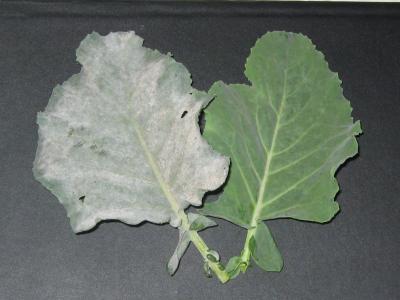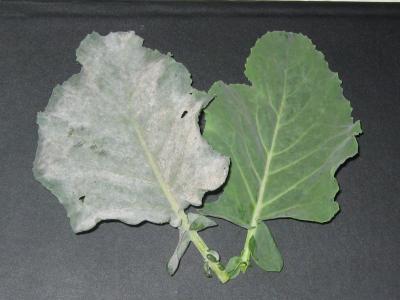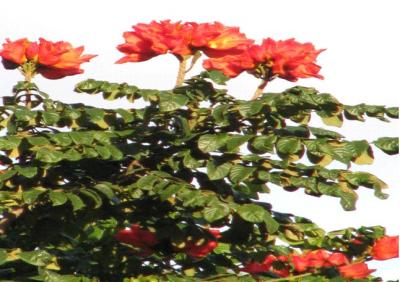


Main aphids in Africa: Black bean aphid ([i]Aphis fabae[/i]), Cabbage aphid ([i]Brevycoryne brassicae/Myzus persicae[/i]), Groundnut aphid ([i]A.craccivora[/i]), Cotton aphid ([i]A.gossypii[/i]), Russian wheat aphid ([i]Diuraphis noxia[/i]), Cypress aphid ([i]Cinara cupressi[/i])
Russian wheat aphid (Diuraphis noxia)
Cereal aphids, being vectors of virus diseases, such as the Barley yellow dwarf virus, can be serious pests in wheat. The important cereal aphids that attack wheat in Kenya include Schizaphis graminum, Sitobion avenae, Rhopalosiphum padi, R. maidis, Metopolophium dirhodum and Diuraphis noxia (the Russian wheat aphid).
The Russian Wheat Aphid (Diuraphis noxia) is one of the most damaging pests of small grain cereals (e.g. wheat, barley, triticale, rye, and oats) in the world. This aphid is a relatively new pest of wheat in Kenya. It was first identified in farmers' fields in 1995. It then spread quickly to all the wheat growing areas of the country and it is nowadays the most important pest of wheat and barley. It is also a major pest in South Africa, but has maintained minor pest status in Egypt, Sudan and Ethiopia.
The Russian wheat aphid is pale to light green in colour with an elongated, spindle shaped body and grows to up to 2 mm long. It has short antennae with rounded very short, nearly invisible cornicles. The feature that easily distinguishes it from other cereal aphids is the presence of an appendage above the cauda, which gives the aphid the appearance of having 2 tails. They prefer to live in the leaf whorls or in tightly rolled leaves, and thus are partially protected from natural enemies and from contact insecticides. They are hardy and can survive extremely low temperatures. Dry weather favours rapid increase of the aphid.
Unlike many important cereal aphids, the Russian wheat aphid is not a known transmitter of diseases, but causes damage by injecting a toxin into the plants during feeding. This toxin prevents the production of chlorophyll and causes, in susceptible cultivars, leaf chlorosis, longitudinal leaf rolling and white/yellow (warm weather) or purple reddish (cold weather) streaking on the leaves. Extensive chlorosis leads to death of plants while leaf rolling retards plant development causing stunted growth. The tight rolling of flag leaves delays ear emergence, leading to floret sterile heads resulting in reduction of seed set. Aphid infestation also reduces the quality of the seeds produced, as shown by low kernel weight, increased rate of seed deterioration under accelerated ageing conditions, and reduced seedling vigour. The effect of infestation on seed quality is more pronounced under dry conditions. Infestation also may result in reduced seedling vigour.
In Kenya, the damage usually appears when crops have attained the tillering stage. Yield losses ranging from 25 to 90% have been reported.
- Scout your crop regularly. Check for damage signs (first noticeable sign is slight to moderate yellowing of small areas of crop within the field; in addition the crop may appear to be under drought stress, even if there is no drought.).
- Use the correct seed rate to ensure good plant density, as low plant densities are susceptible to heavy attack by the aphid.
- Plant as early as possible for your area.
- Provide good growing conditions for the crop. A crop that is not stressed is more tolerant to aphid attack.
- Remove volunteer plants and grasses because they act as the aphid's hosts even before the main crop has been planted.
